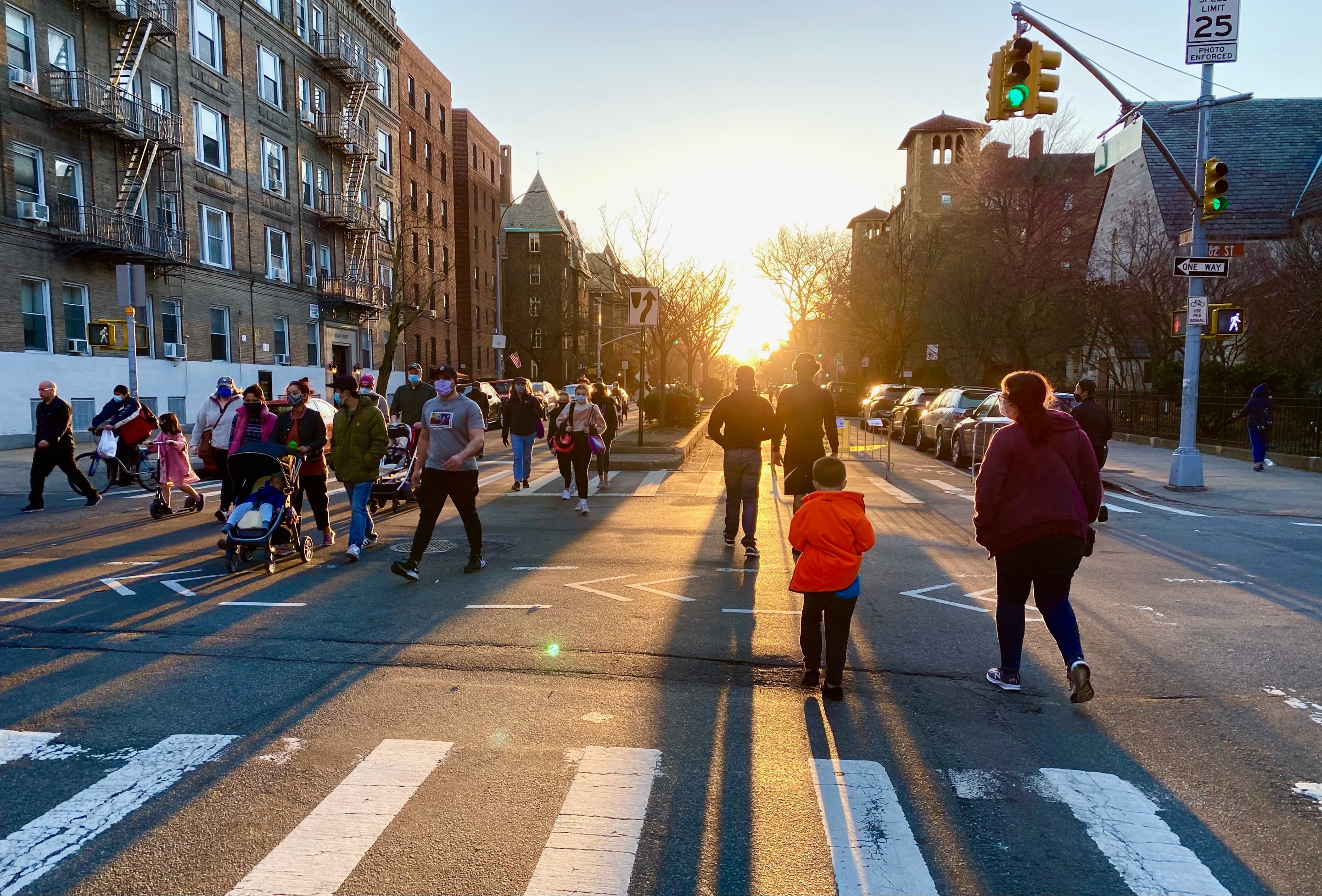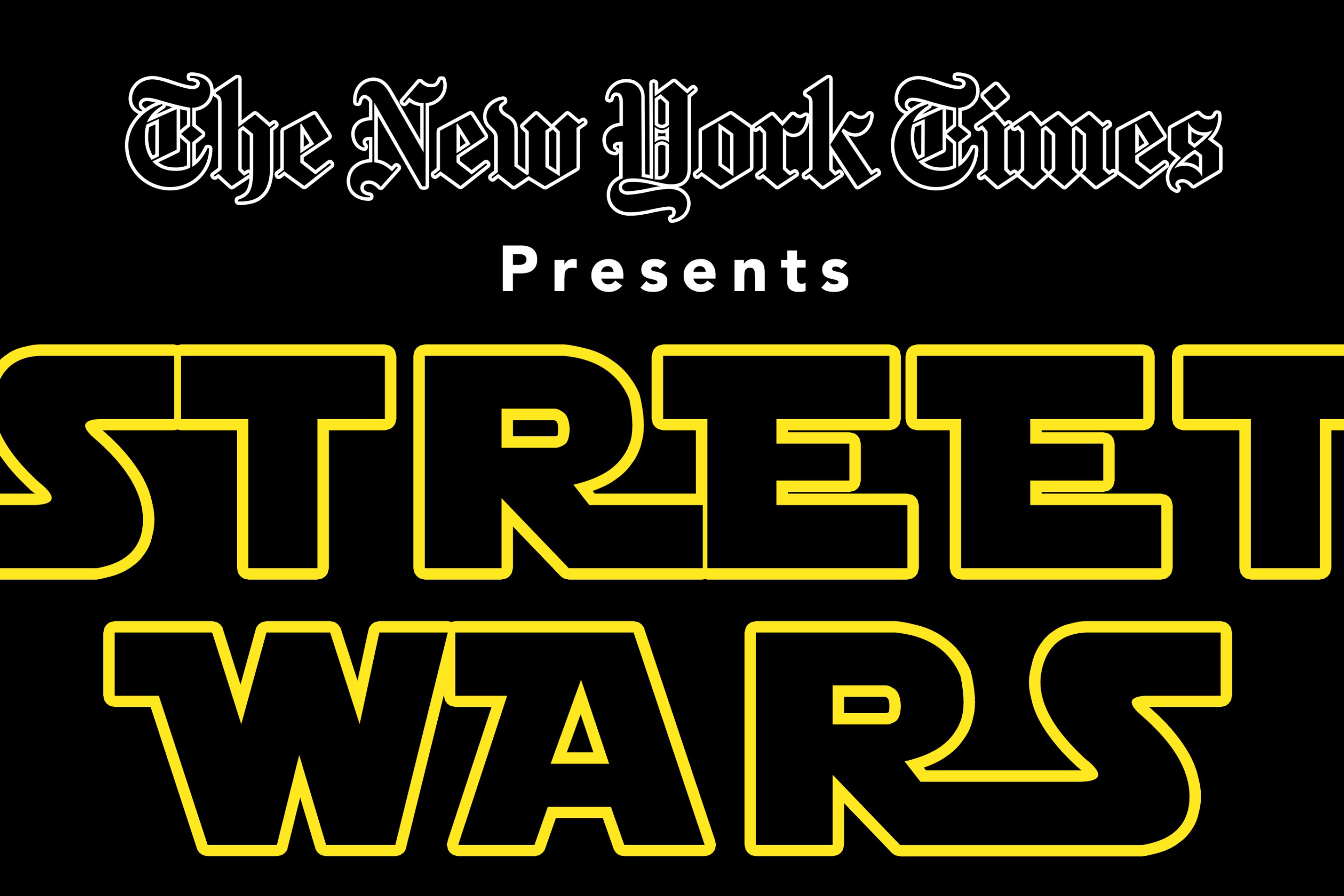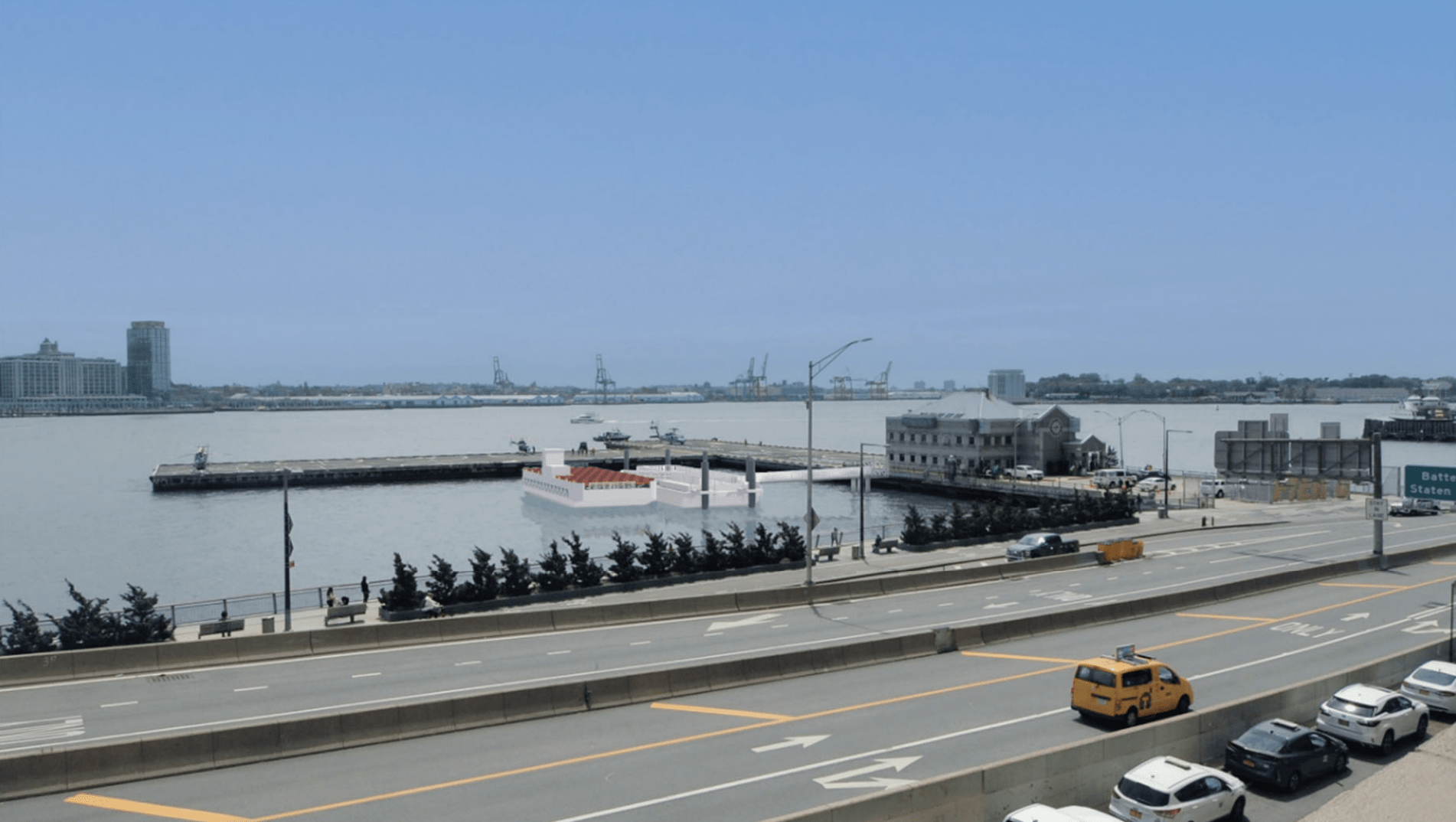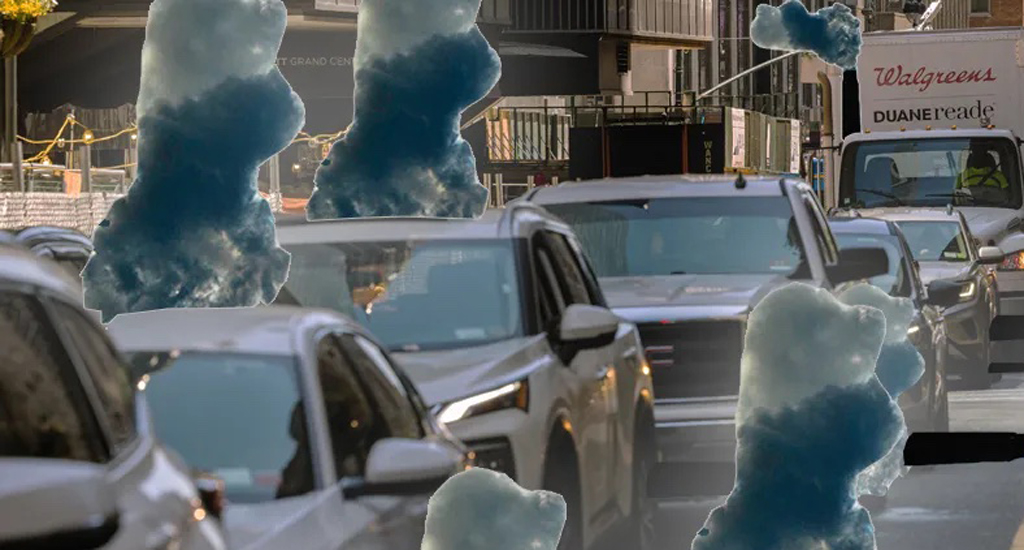The city has begun its discussion of how to properly memorialize the victims of the COVID-19 pandemic, but also celebrate the heroic work of our first responders during a once-in-a-lifetime crisis. Writer and Queens resident Steven Bodzin mentioned to us the idea of creating a memorial from one of the city's best open streets — which the de Blasio administration created as a health initiative during the pandemic and is now wondering what to do with. Bodzin's idea is one worth citywide discussion, so here it is:
It has been a year of tears. I cried more in 2020 than I did in any year since I turned 10. So many people dying. many dying alone, the feeling of abandonment by the state, the loss of hugs and smiles.
Even for those of us whose families have survived the pandemic, it has been a year of grief. For those who have lost family members, it has been a time of endless suffering, made worse by the inconveniences and indignities of pandemic life — talking with health care providers by video phone or trying to navigate probate while the courthouse is closed.
Amidst this horror were a few glimmers of light. New York joined cities around the world in providing more outdoor space for people to walk, bike, sit, or simply connect with their communities. And New York's most successful open street — one that is swarmed with families strolling, messengers rolling, kids learning to scoot or skate, dogs tumbling after one another — is 34th Avenue in Jackson Heights.
It isn’t a mere coincidence that the 34th Avenue open street was so well received. It began while the neighborhood was silent but for the persistent whine of ambulances and a suddenly overwhelming chaos of birdsong. Early in the pandemic, three adjacent neighborhoods, Jackson Heights, Elmhurst and Corona, had the highest known rate of infection in the U.S. The largely working-class, immigrant populations quickly masked up as soon as that idea began to spread on the Internet in late March. But it wasn’t enough. Many residents had to go to work, where they were infected by the thousands.
SIDEBAR: DE BLASIO HAS ZERO VISION FOR PERMANENT OPEN STREETS
When the open street began, it was the first time that people had a significant accessible space in three neighborhoods with almost no parks or plazas. Playgrounds were closed. Sidewalks, having been narrowed decades ago to make more space for car storage, force people to walk single-file, and made it impossible to keep six feet away from anyone walking the other way. So when 34th Avenue was closed to cars and opened to people, it quickly became a small victory, a site of relief and release, a place to connect and share amidst so much isolation and pain.
No single COVID memorial can encompass the infinite varieties of pain experienced over the past year, so we asked 15 design firms to help us remember the pandemic's toll. Here, bronze hands commemorate the barely seen delivery worker https://t.co/Dfevjf7kw6 pic.twitter.com/mx1GkOn6sG
— New York Magazine (@NYMag) March 17, 2021
But for all of its joy, 34th Avenue has always been an informal space. Neither it, nor any other space in New York, was designated as a place to go and remember the dead and wounded of our ongoing fight against the coronavirus. In a city where every borough has memorials to wars and many have memorials to 9-11, there is no place for us to grieve together the continuing pain of a disease that forced people to die alone.
Mayor de Blasio already said he wants open streets made permanent. The city Department of Transportation is holding meetings about how 34th Avenue should be transformed. Most of the ideas relate to specific treatments, such as how to restrict vehicle passage or where to put benches. But we need to think bigger: 34th Avenue should become a memorial to the COVID pandemic.
A living memorial.
Done right, the avenue could attract people from across the city and around the world who want to mark the memory of this time. It would seek to retain the sense of connection and solidarity that many of us have forged in the face of a virus that separated us and risked turning people against one another. We can remember how across the city we came together with mutual aid and the movement for Black lives, while physically defending ourselves against this wily microbe.
I have mentioned this idea to elected leaders, and they have been interested, but have wanted specific suggestions. I am no landscape designer, and I hope others will think about this idea and come up with specific plans. My main suggestions are these:
- Travers Park, the only park in the neighborhood, fronts on 34th Avenue. For those two blocks, the street should be made of a different material, such as stone, and there should be some sort of formal monument to those who died.
- The ends of the open street — currently at 69th Street on the west and Junction Boulevard on the east — should be marked by some sort of small, respectful structures evoking the pandemic.
- The length of the open street — from 69th Street to Junction Boulevard — should look and feel different from other public space and certainly from a normal car-choked roadway.
Just as Gov. Cuomo recently proposed the planting of 17 trees in Battery Park City to celebrate different groups of essential workers, each of the 25 blocks of the Open Street other than those at Travers Park could be marked to remember a group of people who helped us survive.
For me, plans and physical construction are far less important than the designation of the street as a living memorial. One of the best memorials I’ve ever visited is in San Francisco, where an especially beautiful glade in Golden Gate Park is designated the AIDS Memorial Grove. I haven’t been there in years, but when I used to pass through I would see people there, reflecting quietly under the oaks, their pain released and maybe transformed by being there. It’s important to have a peaceful, positive space where we can remember those who have passed and to connect with those who helped our city survive.
And when it comes to COVID, it's important that such a space not only memorialize the dead, but also celebrate the life-affirming symbol of renewal that is represented in the best examples from the open streets program.
And that's my street, 34th Avenue.
Steven Bodzin is a journalist and Jackson Heights resident. Follow him on Twitter @stevenbodzin.





